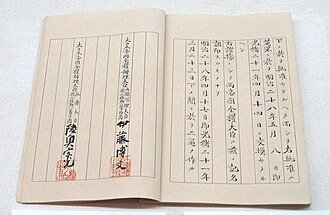1895: The Treaty of Shimonoseki
On April 17, 1895, a significant event took place in the history of East Asia – the signing of the Treaty of Shimonoseki. This treaty effectively brought an end to the First Sino-Japanese War, a conflict that had erupted in 1894 over the control of Korea. The signing of this treaty marked a turning point in the geopolitical dynamics of the region and solidified Japan’s emergence as a major imperial power.
The First Sino-Japanese War
The roots of the First Sino-Japanese War can be traced back to the late 19th century when both China and Japan sought to expand their influence in the Korean peninsula. The conflict began in 1894 when a rebellion in Korea led to the intervention of both nations. The war was characterized by intense military engagements and diplomatic maneuvering.
Japan, with its modernized military and industrial capabilities, emerged as the dominant force in the war. The Japanese forces achieved significant victories on both land and sea, culminating in the decisive Battle of Yalu River. This battle showcased Japan’s superior naval power and marked a turning point in the war.
The Terms of the Treaty
With the signing of the Treaty of Shimonoseki, China was forced to make several concessions to Japan. Firstly, China recognized the independence of Korea, effectively ending its control over the peninsula. This recognition marked a significant shift in the power dynamics of the region.
Furthermore, China ceded Taiwan, along with the Pescadores Islands, to Japan. This territorial transfer provided Japan with a strategic foothold in the East China Sea and expanded its imperial ambitions. The acquisition of Taiwan allowed Japan to further strengthen its influence in the region.
In addition to territorial concessions, China was also required to pay a large indemnity to Japan. This financial burden placed a significant strain on China’s economy and further weakened its position in the region. The indemnity served as a stark reminder of the consequences of the war and Japan’s growing dominance.
The Impact of the Treaty
The signing of the Treaty of Shimonoseki had far-reaching consequences for East Asia. It marked the rise of Japan as a major imperial power and signaled a shift in the balance of power in the region. Japan’s victory over China demonstrated its military prowess and modernization efforts, establishing it as a formidable force.
Furthermore, the treaty altered the geopolitical dynamics of East Asia. Japan’s acquisition of Taiwan and the Pescadores Islands provided it with valuable resources and strategic advantages. This territorial expansion laid the foundation for Japan’s future imperial ambitions and set the stage for its involvement in subsequent conflicts.
The Treaty of Shimonoseki also had implications for China. The loss of Taiwan and the indemnity payment dealt a blow to China’s prestige and weakened its influence in the region. The treaty highlighted the need for China to undergo significant reforms and modernization to compete with the rising power of Japan.
Overall, the signing of the Treaty of Shimonoseki in 1895 marked a pivotal moment in East Asian history. It effectively ended the First Sino-Japanese War and solidified Japan’s emergence as a major imperial power. The treaty’s terms, including the recognition of Korea’s independence, territorial concessions, and the indemnity payment, reshaped the geopolitical landscape of the region and set the stage for future conflicts and power struggles.
For more information on the Treaty of Shimonoseki and its historical significance, you can refer to the following external references:
- Encyclopedia Britannica: Treaty of Shimonoseki
- History.com: First Sino-Japanese War
- The Japan Times: How the Shimonoseki Treaty changed the course of Asian history

